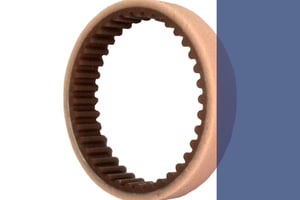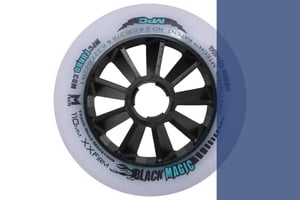The Power of Bonding to Polyurethanes: Enhancing Durability & Performance
Looking to Strengthen Your Product Design? Discover the Benefits of Bonding Thermoset Polyurethanes.
Bonding plays a critical role in manufacturing when combining different materials is necessary to enhance performance and durability. Thermoset polyurethanes offer a highly customizable and reliable option for creating strong, long-lasting bonds with other materials, from metals to plastics.
At MPC, we specialize in bonding thermoset polyurethanes to a variety of materials, creating solutions that withstand extreme stress and environmental conditions. Whether you’re working on rollers, wheels, or bumpers, understanding bonding methods will help you ensure your product is designed for maximum strength and flexibility.
Key Insights:
- Learn how chemical bonding can naturally enhance grip during the molding process.
- Explore when to use adhesives for bonding to non-compatible materials.
- Discover the advantages of polyurethane bonds in high-performance applications.
How to Bond Thermoset Polyurethanes to Other Materials
When it comes to cast molded products, thermoset polyurethanes are commonly used for their two-part liquid system and customizable properties. There are two basic bonding methods to ensure a successful grip between polyurethanes and other materials, chemical bonds and adhesives. A chemical bond can naturally develop during the chemical reaction in a molding process. This method is considered ideal for materials that feature compatible chemistries and manufacturing processes. Materials that do not feature compatible chemistries will require the use of an adhesive to ensure a proper bond. With the right surface preparation and proper adhesive, superior quality and strength can be achieved to meet a product's specifications.
Advantages of Bonding Polyurethanes to Other Materials
Bonded materials are generally used in products that face extreme stress or environmental conditions, such as wheels, rollers, or bumpers. At MPC, we often bond thermoset polyurethanes to a wide range of materials including metals, plastics, and rubber for improved performance and durability. Below are a few examples to demonstrate the benefits of thermoset polyurethanes bonded to other materials.

Polyurethane & Metal
With the help of adhesives, thermoset polyurethanes can virtually bond to any type of metal for long-lasting performance. In most cases, the urethane will wear overtime before the bond ever breaks in operation. For this reason, paper & media handling applications typically require bonded rollers to ensure the urethane remains put, even at high-rotating speeds.
 Polyurethane & Polyurethane
Polyurethane & Polyurethane
Multi-layer constructions are commonly designed to perform different tasks at once. Bonding with thermoset polyurethanes, in particular, offers a unique combination no other materials can achieve alone. For instance, this multi-layer component features a solid layer bonded to an open cell foam. Both materials combined create excellent abrasion resistance, Coefficient of Friction (COF), & self-cleaning properties.
 Polyurethane & Plastic
Polyurethane & Plastic
There are various types of plastics to choose from. As previously mentioned, compatible plastics can eliminate the need for adhesives when bonding to thermoset polyurethanes. Take our inline speed skating wheels, for instance. This high-performance wheel features a thermoplastic hub. The chemistry of the hub is compatible with our materials to form a natural chemical bond.
Conclusion
Whether it's through a chemical bond or adhesives, thermoset polyurethanes can virtually bond to anything! When determining the appropriate bond for your product design, it is important to consider your product's function and environmental conditions. To further explore if thermoset polyurethane is a good fit for your product design, complete our design tool, here, or download Durethane material data sheets below.





